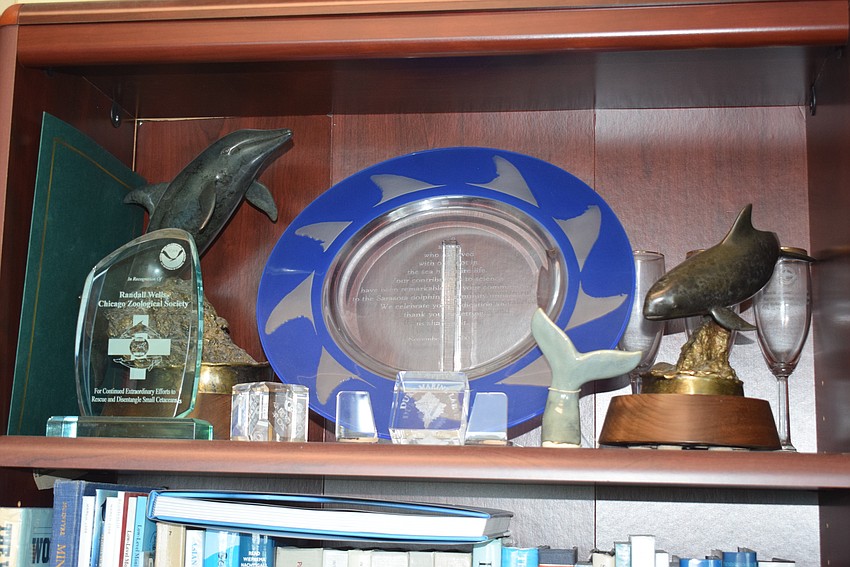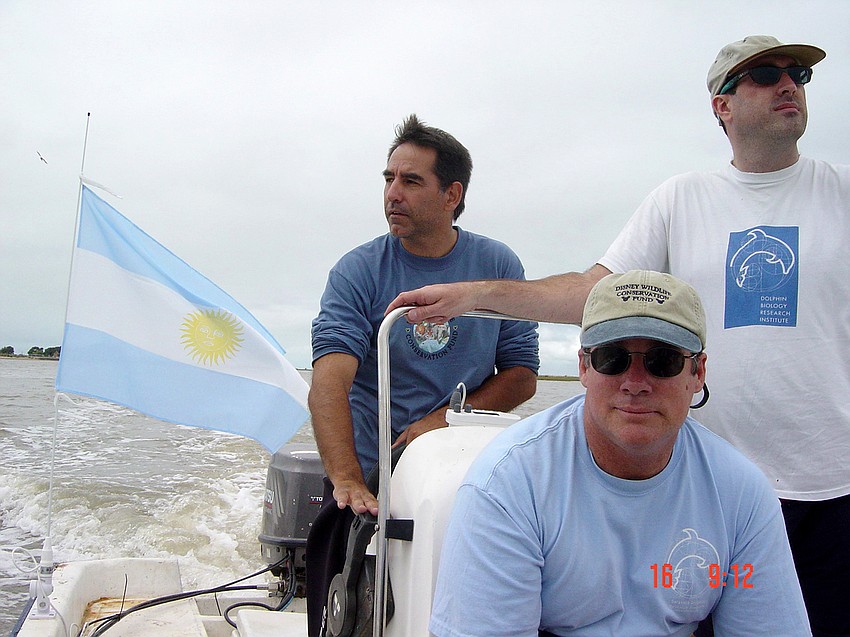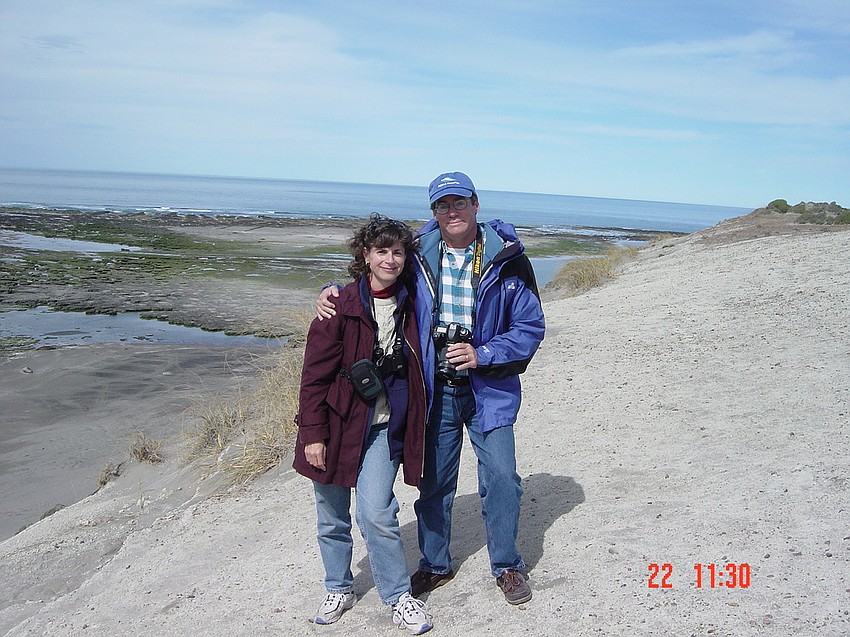- March 12, 2025
-
-
Loading

Individual dolphins can be distinguished by the shape of their fins, but for Randy and Martha Wells dolphin fins and their variations have added significance.
“For our wedding rings, Randy made a band, and it has eight individual fins that he did tiny little carvings on. Each of them is special in our relationship. Fins have become a really big symbol in our life,” said Martha Wells.
Martha and her husband Randy Wells weave their life around their curiosity and love for dolphins. Randy is the director of the world-renowned Sarasota Dolphin Research Program, and it was through this program that Randy and Martha met.
Randy grew up in Peoria, Illinois, and moved to Sarasota in high school. The Florida curriculum allowed Randy to take classes that weren’t offered in Illinois schools, such as oceanography and marine biology. This began his fascination with marine life, specifically sharks.
After getting rejected from his dream marine internship, his father helped him get another opportunity — one that changed his life. In 1970, Randy became a volunteer assistant for Dr. Blair Irvine, who worked at Mote Marine Laboratory at the time.

Irvine was studying the behavioral interactions of sharks and dolphins, while in his free time focusing on the mysterious lives of wild bottlenose dolphins. Throughout the rest of Randy’s high school career, he and Irvine set out to do the first study on wild dolphin ranging patterns. This led to the creation of the Sarasota Dolphin Research Program.
After getting his doctorate from the University of California, Santa Cruz, Randy returned to work at the SDRP. In 1989, he became a senior conservation scientist with the Chicago Zoological Society, which started its operation of the SDRP that same year.
“The Gulf of Mexico is crucial to so much,” said Martha. “There is the environmental connection, in essence with what comes down the river system out of Chicago. The river system is directly tied to the Gulf of Mexico and the Sarasota dolphins.”
Around the same time, Martha worked for the Brookfield Zoo, the Chicago Zoological Society’s home base.
“(SDRP) ended up being one of the programs that we went to Washington to find support for. The politicians in Illinois and also in Florida saw that connection with the Gulf of Mexico. So this brought new money into the agency that allowed them to do work they really wanted to do and supported the program. Randy and I met through doing that work.”

Randy and Martha started dating after a few months of working together. They bonded over their passion for environmental conservation and love for marine life. After enduring three years of long-distance dating, they got married and settled in Sarasota to be near their favorite finned friends.
The Chicago Zoological Society’s main mission focuses on connecting people to wildlife and nature in order to inspire conservation. The Wells explained that this is the purpose behind SDRP and their consistent efforts to educate people about the work they are doing.
“We hope to help people appreciate (dolphins) more as individuals, knowing that they're our neighbors and we’re their neighbors,” said Randy.
Martha now works at Carter Global but she uses any chance she gets to help Randy and his team. Her science communications background allows SDRP to have access to many connections in the community that are useful for the animals. She also helps with spreading the word about the program and getting people engaged.

Martha never misses one of the many research trips Randy goes on with the SDRP. While Randy and the employees are focusing on their research, Martha uses her communication skills for talking with the many different people they encounter abroad. She also documents their work by taking photos.
“It allows for the science people to do the science,” said Martha. “So then if there's a local constituent who wants to learn about it, or who has questions like ‘Why are you guys driving boats fast? Why can you get close to the dolphins and we can't?’ That kind of stuff. They can still do the science and I can go and talk to people with a level of knowledge.”
Randy and Martha always find a way to connect Randy’s research to their daily life.They explained that every day they spend out in the field, they know they are in for a surprise.

“It’s like opening a Christmas present,” said Randy. “When you go out there, you don't know what you're gonna find. And as we've gotten to know the animals better, we can interpret things much more easily with background information, knowing who the animals are, how old they are, what their sex is, who they spend their time with. That sort of thing allows us to ask more and more complex questions and get new answers that nobody's ever, ever been able to do before.”
Randy shared his complex work could not be done without Martha's support.
“I could not ask for a better partner. She is amazing. She's one of the smartest people I've ever met. And she does only high quality work. She's never steered me wrong and any bit of guidance I've gotten from her."